Contents
In addition to the usual mushrooms, in nature there are species that are not quite similar to them either in appearance or in lifestyle and purpose. These include stereoum felt.
It grows on trees and is a parasitic fungus that attacks diseased and dead or living, healthy trees, feeding on them and causing wood diseases. But at the same time, it is not without useful properties that you should know about, as well as about the distribution area, appearance and similar types of felt stereoum.
Where does stereoum felt grow?
On the territory of the Federation, the annual felt stereoum is distributed throughout the forest zone. Most often it can be found on the wood of dead trees, but the fungus is also found on living hardwoods (birch, oak, aspen, alder, willow). From coniferous species, the stereoum chooses pine trunks for life. Its usual habitat is on stumps, deadwood, branches. Mushrooms arrange their fruiting bodies in the form of tiles in large groups. Their fruiting period is in summer and autumn, until December. In regions with a mild climate, growth continues throughout the year.
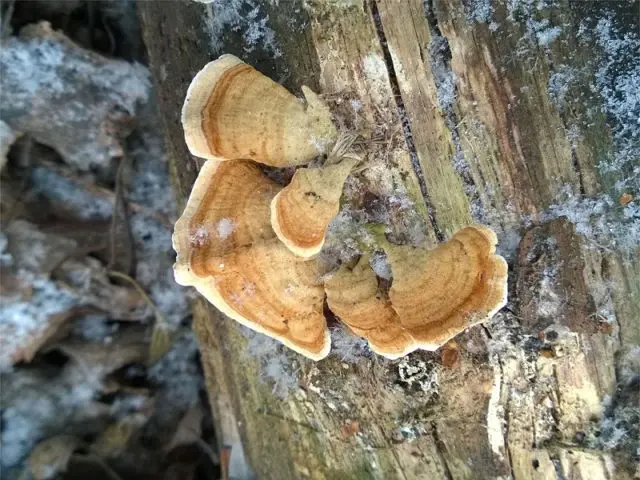
What does a felt stereo look like?
At the beginning of growth, fruiting bodies look like a yellow or brown crust, spread over the surface of a tree or other substrate. Later, its edge is bent and a hat is formed. It is thin, adherent sideways or sessile. It is attached, almost at one point, where there is a small tubercle. The thickness of the cap is about 2 mm, its shape is in the form of a shell with a wavy or simply bent edge. In diameter, the hat of the felt stereoum reaches 7 cm.
Fruiting bodies are arranged in rows in large groups. Later, they grow together with the sides of the hats, which together form intricate long “frills”.
The upper side of the stereum cap has a velvety, felt-like surface. The edge is clearly defined, it is lighter than the rest and has concentric rings. Over time, it darkens, becomes covered with green epiphytic algae.
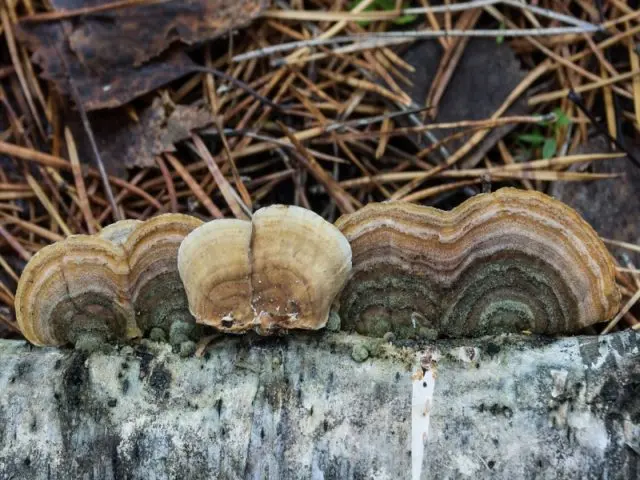
The color of mushrooms depends on their age, climatic and weather conditions, and the place of growth. The shades of felt stereom vary from gray-orange to red-brown and even bright lingonberry.
The bottom of the cap is smooth and dull, and in old fruiting bodies it is wrinkled, faded gray or brownish. Concentric circles are present, but they are weakly expressed in dry weather and much stronger in rainy weather.
The flesh of the representatives of the species is dense, very tough, it has practically no smell and taste.
Is it possible to eat stereoum felt
In addition to edible and poisonous mushrooms, there are inedible ones. These are species that a person does not eat for various reasons. They are not poisonous. They can become inedible due to a bad taste, an unpleasant odor, the presence of spines or scales on the fruiting bodies, or their very small size. One of the reasons for inedibility is the rarity of the species or the unusual habitat of mushrooms.
Stereum felt belongs to the inedible category due to its rigidity.
Similar species
Stiff-haired, wrinkled and multi-colored trametes are considered species close to felt.
rough-haired
Its fruiting bodies are brighter in color and have a woolly surface. The zones of the lower part of the caps are somewhat less pronounced than in the felt stereum and have very bright colors. After the onset of winter and frost, this species changes its color to gray-brown with a clarified edge.
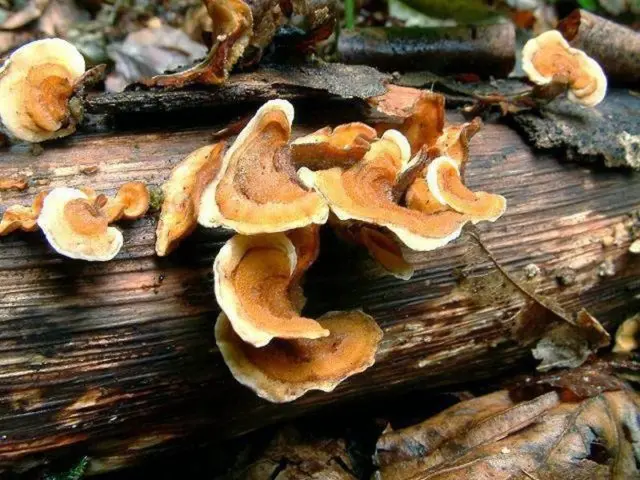
Wrinkly
The stereum of this variety has perennial fruiting bodies that merge with each other and form stripes and spots on the surface of the substrate. The hymenophore of such representatives is hilly, brownish with a gray coating, after damage it becomes red.
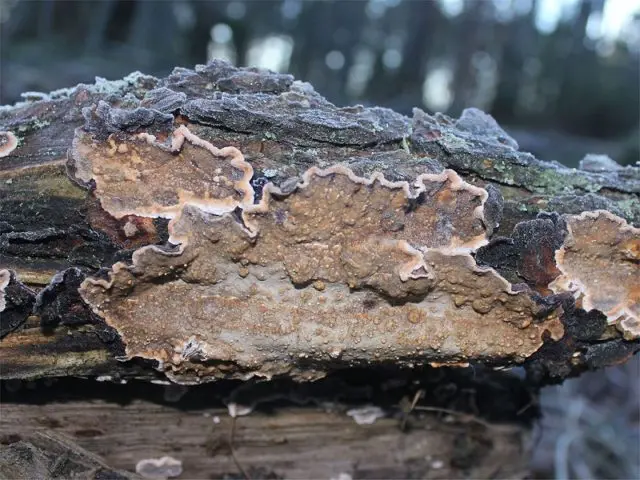
Trametes multi-colored
The fungus belongs to the tinder fungus. Its fruiting body is perennial, fan-shaped. It is attached to the wood sideways. Its base is narrowed, to the touch – silky. Coloring – very bright, multi-colored, consisting of white, blue, red, silver, black areas on the hat. It is extremely difficult to confuse such an instance with other species.
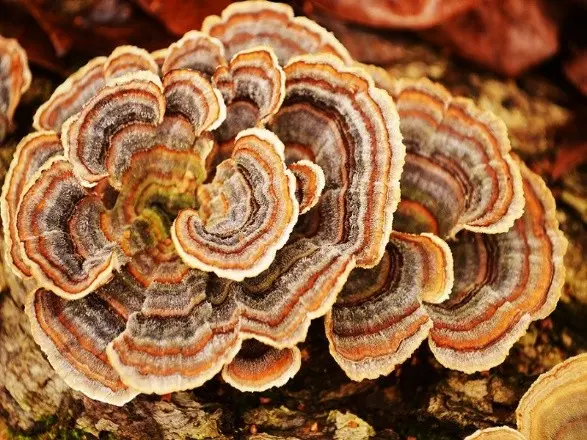
Application
Despite the inedibility of the species, the felt stereum has a number of medicinal qualities, which are associated with the fact that substances with antitumor and antimicrobial properties were found and isolated in its fruiting bodies.
Mushroom extract has a high antibacterial activity against rod-shaped bacteria, which is the causative agent of a rare form of pneumonia.
Substances obtained from fresh fruiting bodies are able to fight Koch’s bacillus, start necrotic processes in cancer cells.
Conclusion
The felt stereoum is inedible, mushroom pickers do not harvest it, but it is another representative of wildlife that combines the signs of plants and animals – the kingdom of fungi. Knowledge of the characteristics of the growth of culture helps in understanding nature and provides the basis for the study of mycology.









